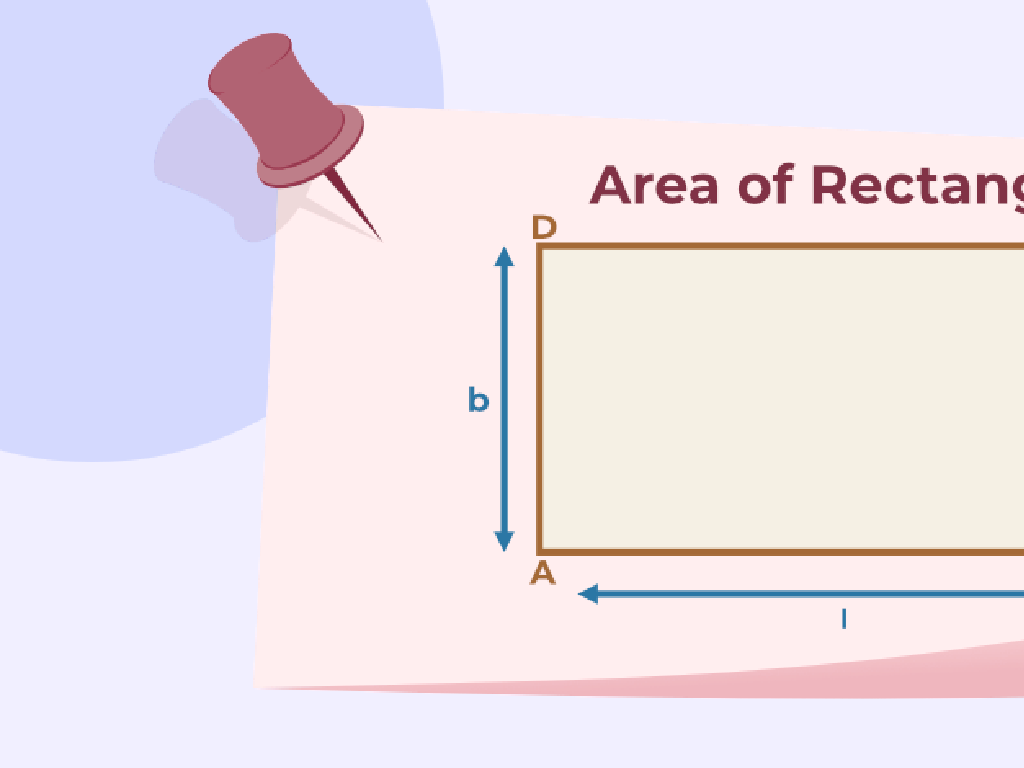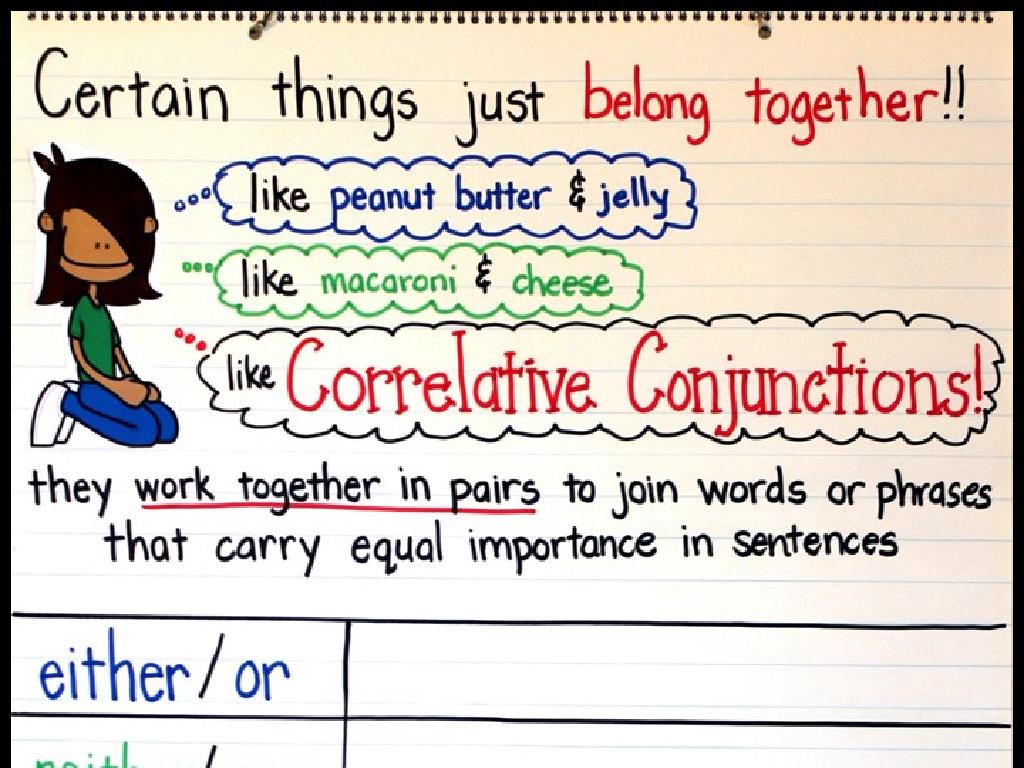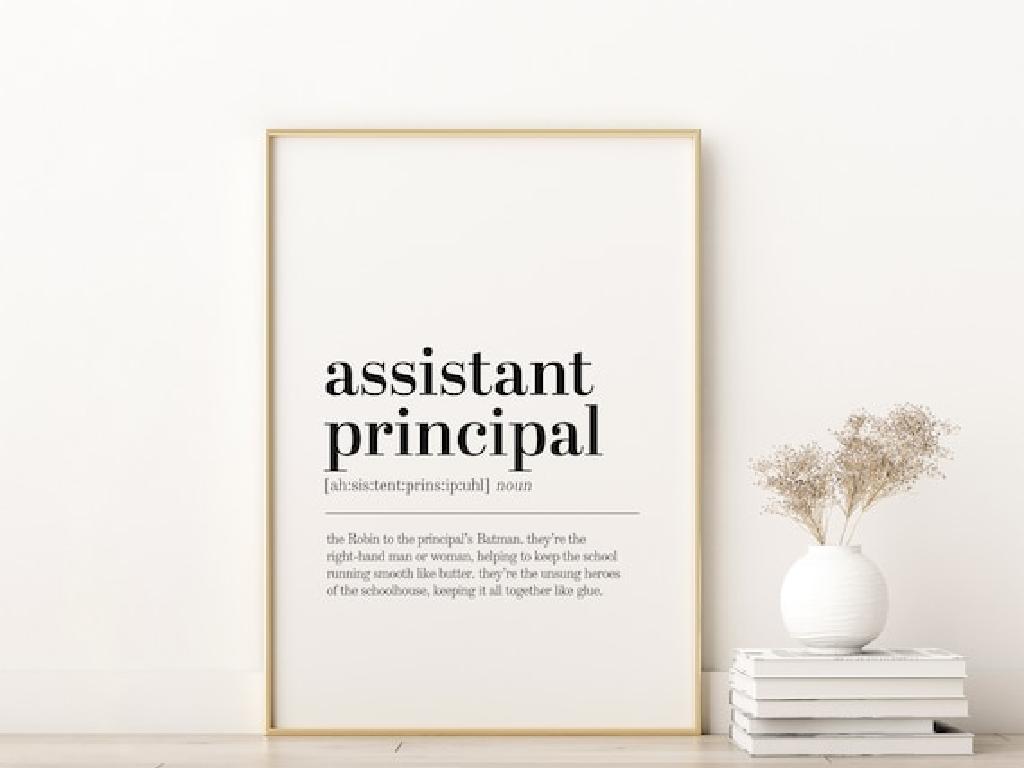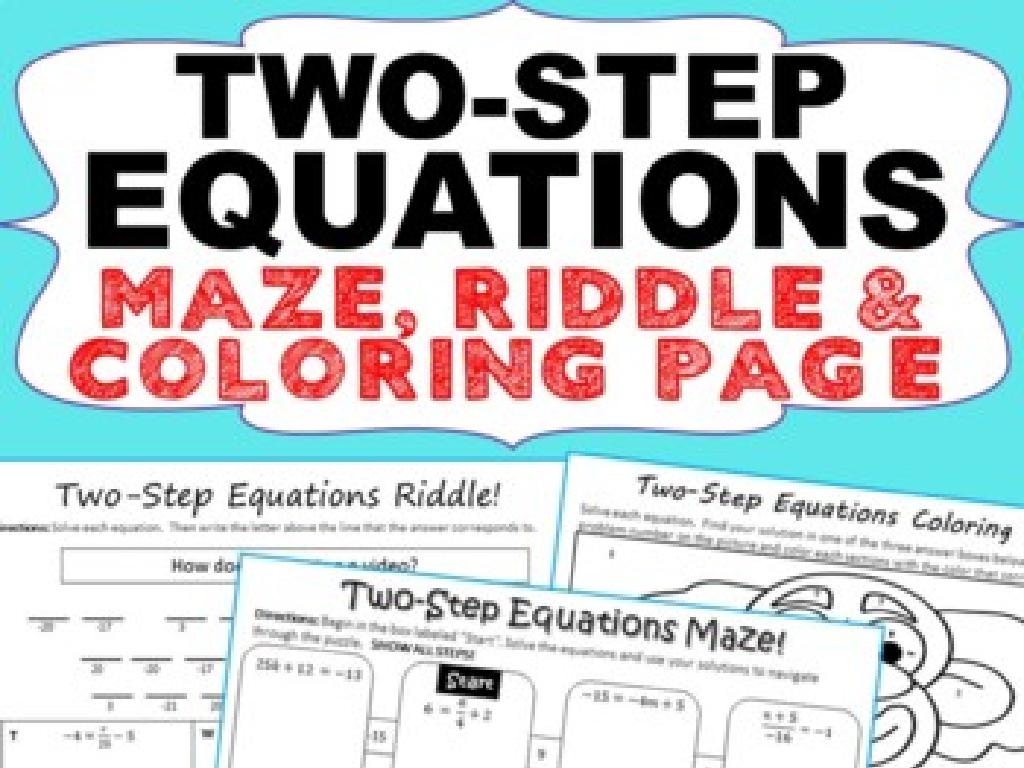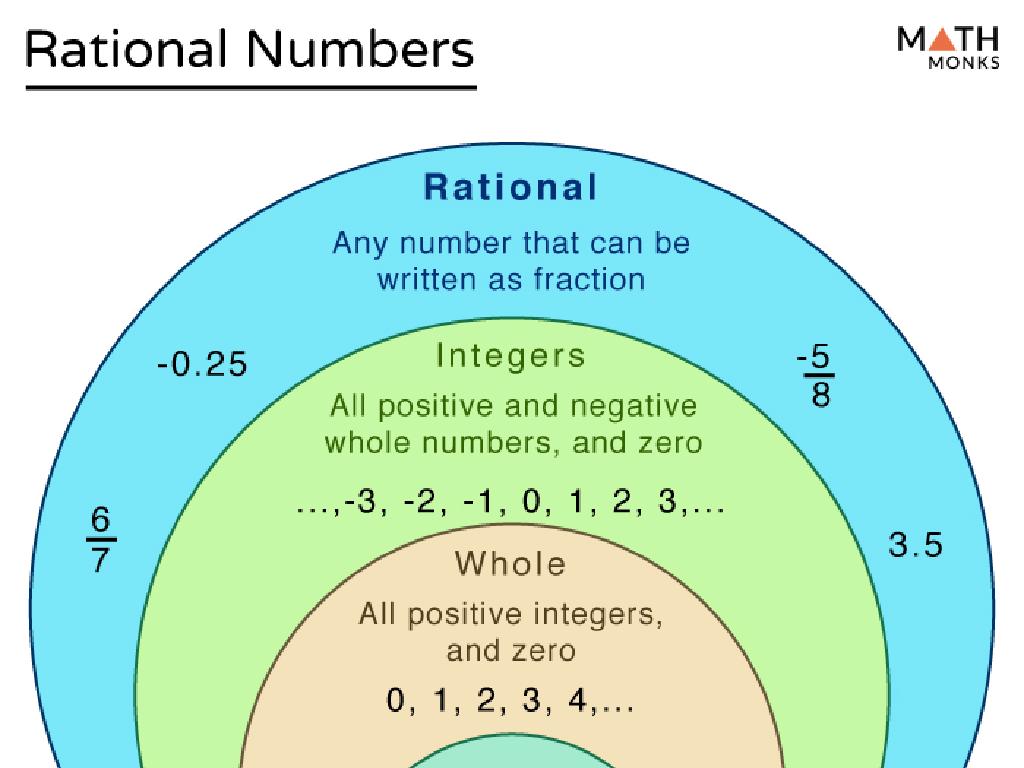Identify Numbers - Up To 5
Subject: Math
Grade: Kindergarten
Topic: Numbers To 5
Please LOG IN to download the presentation. Access is available to registered users only.
View More Content
Welcome to Numbers!
– Greet our little mathematicians
– Today’s goal: Numbers up to 5
– We’ll learn to recognize numbers 1, 2, 3, 4, and 5
– Numbers are all around us
– Look around, numbers can be found in many places
– Let’s discover numbers together
– We’ll play games to spot and count numbers
|
This slide is designed to introduce kindergarten students to the concept of numbers, specifically focusing on numbers up to 5. Start with a warm greeting to make the children feel excited about math. Explain that the goal of today’s lesson is to identify and understand numbers 1 through 5. Emphasize that numbers are a part of our everyday life and can be found everywhere, from the number of apples in a bowl to the number of buttons on a shirt. Encourage the children to be observant of their surroundings to find numbers. Plan interactive activities such as number scavenger hunts or counting games to make the learning process fun and engaging. The aim is to create a friendly and enjoyable environment that fosters the children’s interest in mathematics.
What is a Number?
– Numbers show quantity
– Numbers tell us ‘how many’ of something
– Counting with numbers
– We use numbers to count items
– Practice counting 1 to 5
– Let’s count objects together: 1 apple, 2 apples, 3 apples, etc.
|
This slide introduces the concept of numbers to Kindergarten students, emphasizing their role in representing quantity. Begin by explaining that numbers help us understand ‘how many’ there are of something, such as toys or cookies. Demonstrate counting with real-life objects to make it tangible. Engage the students by counting together from 1 to 5, using classroom items or illustrations to help them visualize. Encourage participation and make it interactive by asking students to count along with you. This activity will help them grasp the basic concept of numbers and their sequential order.
Learning the Number 1
– The number one: 1
– Using number 1 for counting
– When we have only one item, we say ‘one’.
– Find one object
– Look around to find a single item in the room.
– Class activity: One-item hunt
– Let’s search for one book, one crayon, or one toy.
|
This slide introduces the concept of the number 1 to Kindergarten students. Begin by showing the numeral ‘1’ and explaining that it represents a single item. Use concrete examples like one apple or one block to illustrate the concept. For the class activity, encourage the children to find one object in the classroom, such as one pencil or one toy, to reinforce the concept of ‘one’. This activity helps students to connect the abstract concept of the number 1 with tangible items they can see and touch. It’s a fun and interactive way to begin understanding numbers and counting.
Learning About the Number 2
– This is the number 2
– Number 2 for two items
– Like two apples, two toys
– Counting two books together
– Let’s find and count two books
– Practice with number 2
|
This slide introduces the concept of the number 2 to Kindergarten students. Start by showing them the numeral ‘2’ and explaining that it represents the quantity of two items. Use tangible examples like two apples or two toys to illustrate this concept. Engage the students in an interactive activity by asking them to find two books in the classroom and count them aloud together. This reinforces their understanding of the number 2 through practical application. Encourage the students to practice counting to two with various objects to solidify their grasp of the concept.
Learning About the Number 3
– This is the number 3
– Number 3 in everyday use
– When we have three apples, toys, or friends, we use the number 3.
– Counting three crayons
– Let’s practice by counting out three crayons one by one.
|
This slide introduces the number 3 to Kindergarten students. Start by showing them the numeral 3 and explaining that it represents a quantity of three items. Use concrete examples from their daily life, such as counting three apples, to illustrate the concept. Then, engage the students in a hands-on activity by counting out three crayons together. This will help them associate the number with actual objects, reinforcing their understanding of quantity and number recognition. Encourage the students to participate by asking them to hold up three fingers or to find groups of three items in the classroom.
Learning About the Number 4
– Recognizing the number 4
– Using 4 to count objects
– When we have four apples, toys, or crayons, we count: 1, 2, 3, 4.
– Finding 4 blocks together
– Let’s look around to gather four blocks and count them as a group.
– Practice counting to 4
– We’ll count items in the classroom to practice reaching the number 4.
|
This slide introduces the number 4 to Kindergarten students. Start by showing the numeral and saying the number out loud. Explain that the number 4 is used when we have four items. Engage the students in a hands-on activity where they find and count four blocks. This will help them visually and physically understand the concept of the number 4. Encourage the students to count various sets of four items in the classroom to reinforce the concept. The goal is for students to be able to recognize the number 4, understand it represents a quantity, and use it confidently in counting.
Learning About the Number 5
– This is the number 5
– Number 5 in everyday items
– Like 5 apples or 5 crayons
– Counting five fingers
– Let’s count our fingers together
– Practice with number 5
– Find 5 toys or 5 blocks to count
|
This slide introduces the number 5 to Kindergarten students. Start by showing them the numeral 5 and explaining that it represents a quantity of five items. Use common objects that children are familiar with, such as apples or crayons, to illustrate the concept. Engage the students by having them count out five fingers on one hand, which helps them visualize and understand the number. For practice, encourage the children to find groups of five items around the classroom or at home, such as toys or blocks, and count them. This hands-on activity reinforces their understanding of the number 5 through real-world application.
Let’s Practice Counting!
– Count items together
– We’ll count objects like blocks or crayons
– Groups from 1 to 5
– Notice the groups have 1, 2, 3, 4, or 5 items
– Ready? Let’s start!
– Get excited to count with me!
|
This slide is designed to engage Kindergarten students in a counting activity. The teacher will guide the students to count various items, such as blocks, crayons, or stickers, in groups ranging from 1 to 5. This will help them understand the concept of numbers and quantity. The activity should be interactive, allowing students to participate and practice counting out loud. The teacher should encourage the students and provide positive reinforcement as they count. To accommodate different learning styles, the teacher can use visual aids, such as pictures or actual items, and incorporate movement or songs to make the counting practice more dynamic and enjoyable.
Class Activity: Number Hunt
– Let’s go on a Number Hunt!
– Find items in groups of 1 to 5
– Look for pencils, blocks, or toys in groups
– Count with a buddy
– Pair up and help each other count correctly
– How many items did you find?
|
This activity is designed to help Kindergarten students recognize and count numbers up to 5 through a fun and interactive game. Set up the classroom with various items grouped from 1 to 5. Encourage students to explore the room and find these groups. They should work in pairs to foster teamwork and help each other in counting. After the hunt, gather the students and discuss what they found, asking them to share how many items were in each group they discovered. This reinforces number identification and counting skills. Possible variations of the activity could include finding items of a specific color, counting items in a picture, or grouping items themselves.
Great Job Counting!
– Amazing counting today!
– You know numbers up to 5
– Time for a big applause
– Clap your hands for your hard work
– You’re all number stars!
– Celebrate learning new numbers
|
This slide is a celebration of the students’ achievement in learning to count up to 5. It’s important to acknowledge their effort and make them feel proud of their progress. Encourage the children to give themselves and their classmates a big round of applause to reinforce positive feelings about learning. This will help build their confidence and associate math with fun and accomplishment. You can also incorporate a physical activity, like clapping or a happy dance, to make the celebration more engaging. Remember to use enthusiastic and encouraging language to make the students excited about their next math adventure.

